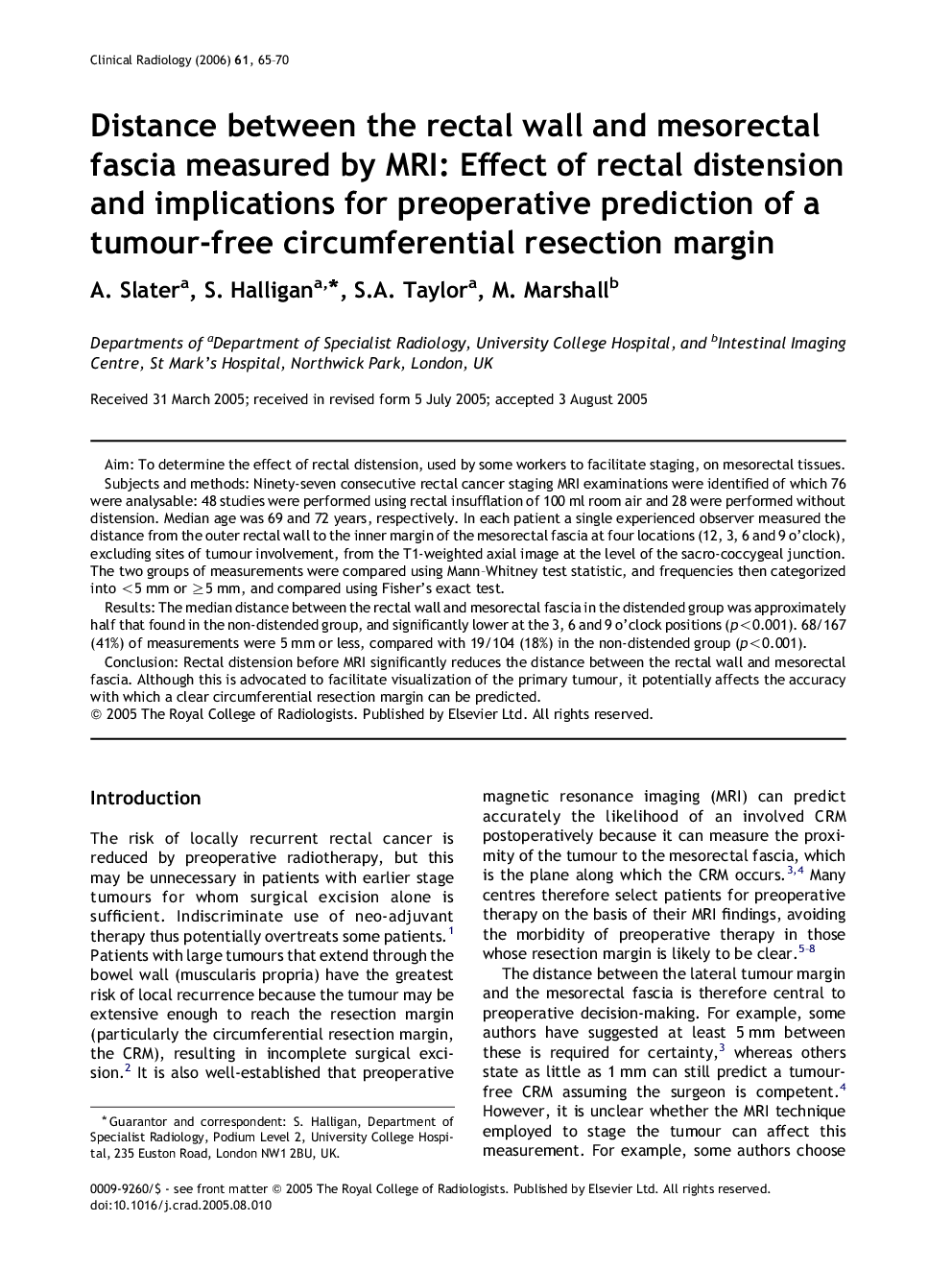| Article ID | Journal | Published Year | Pages | File Type |
|---|---|---|---|---|
| 3984031 | Clinical Radiology | 2006 | 6 Pages |
AimTo determine the effect of rectal distension, used by some workers to facilitate staging, on mesorectal tissues.Subjects and methodsNinety-seven consecutive rectal cancer staging MRI examinations were identified of which 76 were analysable: 48 studies were performed using rectal insufflation of 100 ml room air and 28 were performed without distension. Median age was 69 and 72 years, respectively. In each patient a single experienced observer measured the distance from the outer rectal wall to the inner margin of the mesorectal fascia at four locations (12, 3, 6 and 9 o'clock), excluding sites of tumour involvement, from the T1-weighted axial image at the level of the sacro-coccygeal junction. The two groups of measurements were compared using Mann–Whitney test statistic, and frequencies then categorized into <5 mm or ≥5 mm, and compared using Fisher's exact test.ResultsThe median distance between the rectal wall and mesorectal fascia in the distended group was approximately half that found in the non-distended group, and significantly lower at the 3, 6 and 9 o'clock positions (p<0.001). 68/167 (41%) of measurements were 5 mm or less, compared with 19/104 (18%) in the non-distended group (p<0.001).ConclusionRectal distension before MRI significantly reduces the distance between the rectal wall and mesorectal fascia. Although this is advocated to facilitate visualization of the primary tumour, it potentially affects the accuracy with which a clear circumferential resection margin can be predicted.
